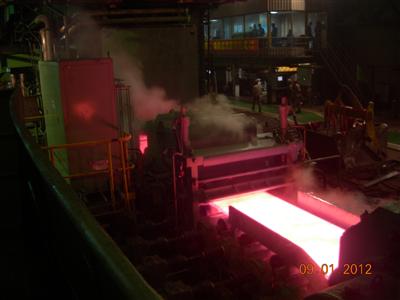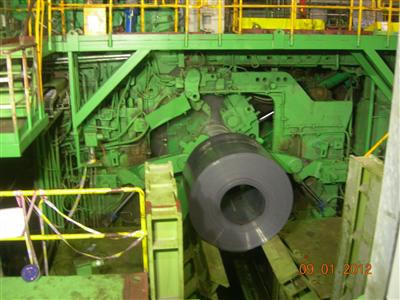The Taiyuan Steel 1,549mm hot strip mill revamped by CISDI was successfully put into operation on September 1, 2012. The revamping covers the whole hot rolling process, including slab yard, reheating furnace area, rolling mills, coil conveyance system and coil yard.
Revamping Outcomes
- Optimized product mix
The straight carbon steel product output is reduced, the portion of high-strength steel and grade steel (e.g. high-strength steel for construction machinery, high-strength atmospheric corrosion resisting steel, high-strength automobile steel, high-strength container). The finishing block main drive and coiler #3 are also adapted for the above product types.
- Expanded production capacity
The max. coil weight is increased from 20t to 25t, contributing to higher yield and capacity.
- Improved product quality
With revamped high-pressure water primary and finishing descaler and addition of inter-stand descaling device for finishing block, the surface quality of stainless steel and carbon steel cold rolling feedstock is improved, allowing the mass production of high-grade steel for cold rolling. With revamped work roll cooling and lubrication system for finishing block, the strip surface flatness is improved. Coiler #3 is replaced to improve the coiling quality. The vertical coil conveyance system is changed to horizontal coil.
- Capability of Producing Thin-Gauge Stainless Steel Strips
The market demand for thin-gauge stainless steel products is increasing, but the main motors of F1~F3 are alarmed for overloading while rolling limit-gauge stainless steel strips. After revamping, the thin-gauge stainless steel strips can be produced in mass, and most of the narrow stainless strips (<1,250mm) can be rolled in 1,549mm hot strip mill, contributing to maximized profit-making efficiency of both 1,549mm HSM and 2,250mm HSM.
- Elimination of Potential Equipment Risks
Many of the existing equipment in hot strip mill were imported from Japan and have been frequently overloaded during years of service. The revamping improves the equipment safety and stability, reduces the equipment maintenance cost and downtime.

